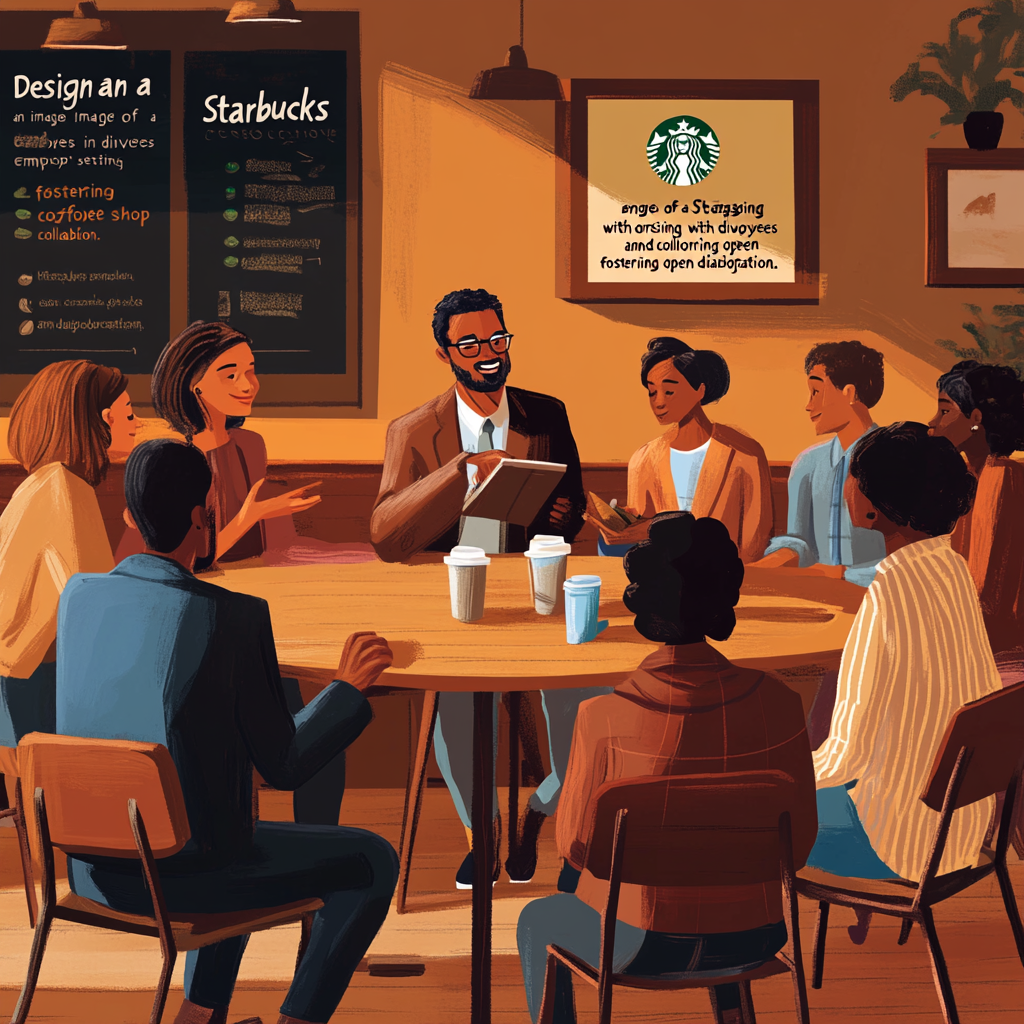
Starbucks CEO’s Plan to Mend Employee Relations
In the exhilarating world of coffee, where the aroma of freshly brewed java mingles with the aspirations of baristas and employees alike, a seismic shift is brewing. Enter Brian Niccol, the newly minted CEO of Starbucks, who finds himself at the helm of a company with a storied legacy but also a cloud of employee discontent hovering ominously overhead. With protest signs and union banners fluttering outside various locations, it's clear that the traditional brew of beans isn't the only thing that needs stirring at Starbucks—it's the very soul of its workforce.
Now, let's roll up our sleeves and dive deep into the frothy foam of this situation, shall we? Niccol's mission begins in a landscape riddled with challenges that would intimidate even the bravest of coffee crusaders. Employee dissatisfaction doesn’t just brew under the surface; it’s boiling over. The chorus of complaints includes grievances over pay that feels more overdue than your last drink order during the morning rush, erratic scheduling that flips an employee's life upside down faster than an espresso shot can be pulled, and outdated equipment that resembles ancient relics rather than tools of the trade.
The clang of union voices isn't just background chatter; it's the rallying cry of Starbucks Workers United, representing over 515 stores across the nation. For context, Starbucks boasts nearly 17,000 locations in the U.S. alone, so it’s safe to say that this is more than just a passing trend—a potent sign that employees are thirsty for change. Niccol’s challenge? To turn back the tide of discontent and restore a sense of camaraderie and satisfaction among his workforce.
But what do operational hiccups have to do with this rebellion? Well, picture a busy morning shift: staff are scrambling, customers are waiting longer for their caffeine fixes, and the whole operation is starting to resemble a circus run without a ringmaster. This chaotic choreography has resulted in diminished sales, with the latest figures reflecting a 6% drop in same-store sales and earnings per share plummeting by a staggering 24%. It's time for Niccol to step into the role of the much-needed performance coach to whip this team back into shape.
Now, how does he plan to tackle these behemoth-like obstacles? First, it’s all about making nice with the unions. Niccol's stance is refreshingly straightforward—he believes in a respectful partnership with the labor movement. A heartfelt letter to the Starbucks Workers United bargaining team emphasized that he respects the right of employees to choose representation and is committed to engaging with them in what could very well be the start of a beautiful relationship.
Next on Niccol’s checklist is optimizing operations. His plan involves a staffing boost at 3,000 stores, which should lighten the load, reduce burnout, and—let’s be honest—make the whole coffee experience better for everyone involved. Alongside this, he’s leveraging the Siren Craft System—a nifty piece of technology introduced by his predecessor, ensuring that those long lines move smoother than a silk robe sliding off the back of a chair.
Not one to shy away from the importance of culture, Niccol's vision also hinges on nurturing an employee-centric environment. He’s got his sights set on bringing the career advancement ladder back into view, a strategy that served him well during his tenure at Chipotle. Aiming for 90% of positions to be filled through promotion, he’s looking to remind Starbucks employees that they are not just temporary players in a coffee conveyor belt; they have potential for growth and success.
Now, let’s talk about those pesky myths that loom large in the corporate world as if they were as permanent as a rusted coffee grinder: the first being that focusing on employees means the profit line takes a nosedive. Not true! Just look at companies like Best Buy and Costco, which prioritize their employee experience and find that customers appreciate the effort—and guess what? The bottom line reflects those happy vibes. When employees are treated like valuable players, rather than mere cogs in the machine, productivity soars, and creativity bursts like steam off a freshly brewed Americano.
Yet another myth that needs a dose of espresso-fueled clarity is the idea that employees are simply numbers on a spreadsheet. They’re human beings, critical members of the company’s ecosystem. To treat them as anything less is a gross oversight. Take a cue from Eli Lilly, which has adopted an "employee journey" tool akin to those used for customers. By recognizing employees as unique individuals with aspirations and needs, the company has reaped rich rewards in diversity and satisfaction—precisely what every organization should strive for.
And, while we’re at it, let’s not miss out on the companies that are already blazing trails in building amazing workplaces. KPMG and Ciuni & Panichi are frontrunners in offering flexible work arrangements, generous paid parental leave, and health programs that make employees feel valued. Ciuni & Panichi, with their thoughtful little bonuses, gift cards, and handwritten thank-you notes, wraps their employees in a familial embrace that makes work feel less like a job and more like a community.
Creativity is also on the menu, with Majestic Steel creating a company cookbook that highlights contributions from non-management employees. Now that’s engaging! It shows how empowering workers not only builds loyalty but also fosters a sense of pride in what they do. And then there are those companies that ask employees what skills they aspire to cultivate, providing training programs that help them shine, like a perfectly brewed cup of specialty coffee on a rainy day.
As we keep a keen eye on Brian Niccol's endeavor to mend the frayed threads between Starbucks and its employees, we must recognize that this endeavor is of paramount importance. By skewering the outdated leadership myths, addressing the thundering operational issues, and nurturing a workplace culture that prioritizes employee well-being, Niccol isn’t just stirring the pot—he’s redefining the entire blend. The result could mean rejuvenated employee morale, happier customers, and a more robust bottom line.
Embracing change in the corporate world is more than just a necessity; it’s a strategic advantage. The biggest takeaway from this caffeine-fueled saga? A happy, engaged employee is a cornerstone of a successful and thriving business. Let’s keep our fingers crossed and the coffee cups full as we watch Niccol navigate these uncharted waters.
But don’t just sit there—stay in the loop and find out what unfolds next in the ever-evolving narrative of corporate strategies and employee relations. Want to stay up to date with the latest news on neural networks and automation? Subscribe to our Telegram channel: @channel_neirotoken.

